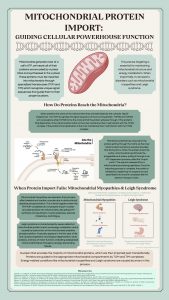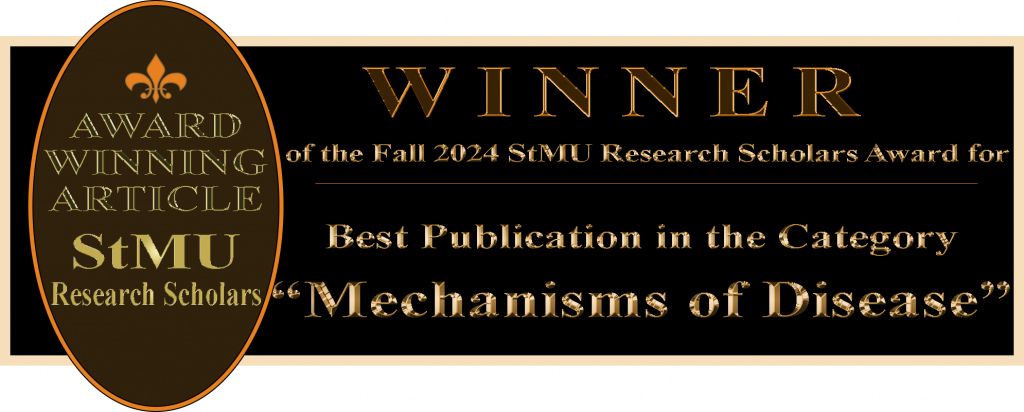
In Genesis 1:26, God says “’Let Us make man in Our image, after Our likeness; and let them have dominion over the fish of the sea, and over the fowl of the air, and over the cattle, and over all the earth and over every creeping thing that creepeth upon the earth’” 1. Many have questioned over the years the extent to which this command from God extends, and there have been multitudinous arguments throughout history over how people across the world should be treating animals.
There are several organizations like PETA and people all over who agree that animal life should be treated with the same dignity and respect as human life should be, some even going so far as to say that animals should not be consumed at all. However, there are also those who interpret the scripture verse above to mean they can do whatever they desire to animals, as evidenced by the abundance of overcrowded farms to capitalize on the meat industry, the fishing companies that diminish the populations of sea life in our oceans day after day, and those who are guilty of any form of animal cruelty.
Today, there exists a new component mankind has added to this centuries-old debate, and it comes in the form of genetic modification. If not today, then in the near future, we will have unlocked complete control over the genome of any organism, and for our purposes we will focus on the genomes of animals. The question is now raised of how we should utilize our newfound genomic tools ethically when it comes to utilizing them on animal life, and to answer this question we will begin with how this even became a possibility.
A Modern View of Genetic Modification:
The ability to genetically modify animals in the first place stems from developments in two areas the biological sciences, genome editing and DNA sequencing 2. Being able to sequence the DNA of any organism enabled scientists to completely map out any organism’s genome, leading to publishing a plethora of studies comparing genomes between different organisms. However, this technology only allowed scientists to see what a genome looked like, with no clear way as to how scientists could begin to actually modify or change a genome. This all began to change with “the rapid development and widespread adoption of a simple, inexpensive, and remarkably effective genome engineering method known as clustered regularly interspaced short palindromic repeats (CRISPR)–Cas9” 3.
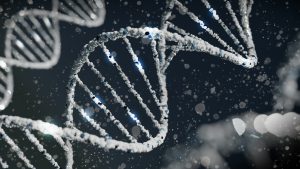
CRISPR revolutionized “the fields of genetics and molecular biology as researchers employ these methods to change DNA sequences—by introducing or correcting genetic mutations—in a wide variety of cells and organisms” 4. As of today, CRISPR has been utilized in various ways, including but not limited to being used to correct defects in any genome, provided the wild-type sequence is available to judge the mutation against, being a method to facilitate the modification of the entire genome, and as a way to introduce changes to the “pluripotent embryonic stem cells” in order to create whole tissues of various types.
The genetic modification of animals has already begun and is an ongoing process in research around the world. Before we make any sort of judgment related to the ethics, we must begin by first discussing some advantages, and then some disadvantages, of how we genetically modify animals today and assess the way society views these bold new applications of CRISPR and other tools on animal life.
Advantages of Genetic Modification:
When it comes to the benefits of being able to genetically modify animals, “the primary application of genetic engineering to wild species involves cloning … [and] could be applied to either extinct or endangered species.” Soon we may live in a world where no more animals go extinct, and some species are brought back to life with the advancements made in genetic engineering. Farm animals can be genetically modified to enhance food quality. For example, pigs have been genetically modified to express the Δ12 fatty acid desaturase gene from spinach for higher levels of omega-3 and goats have been modified to express human lysozyme in their milk. These are advances that will help add to the nutritional value of animal-based products. Similar to how crops can be genetically modified to be bigger and taste better, the future of nutrition and the proper diet could change if the changes we see to our animal products are significant enough. Finding new ways to improve our diets through genetic engineering could change the way we view a balanced diet and the way we define it. 5
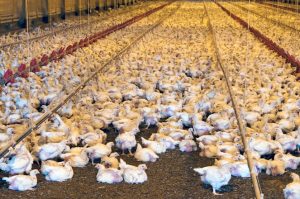
Farm species may be genetically modified to create animals that are resistant to disease. Some examples include “conferring immunity to offspring via antibody expression in the milk of the mother; disruption of the virus entry mechanism (which is applicable to diseases such as pseudorabies); resistance to prion diseases; parasite control (especially in sheep); and mastitis resistance (particularly in cattle)” 6. Treatment of disease with antibiotics opens the door for the evolution of the bacteria through processes like bacterial transformation, however treatment by eliminating vulnerability to the disease will not allow for the evolution of a disease. With these modifications to the genomes of farm animals we could soon see fewer recalls of food products and less disease and death because of contaminated food products. Genetic modification of animals has also been utilized in order to reduce agricultural pollution. The best-known example is the “EnviropigTM; a pig that is genetically engineered to produce an enzyme that breaks down dietary phosphorus (phytase), thus limiting the amount of phosphorus released in its manure” 7. Pollution is certainly something large-scale forms produce in great amounts, so discovering ways to use an animals’ genome to help bring down pollution could change our planet for the better and help to heal the damage caused to the environment by large-scale farming.
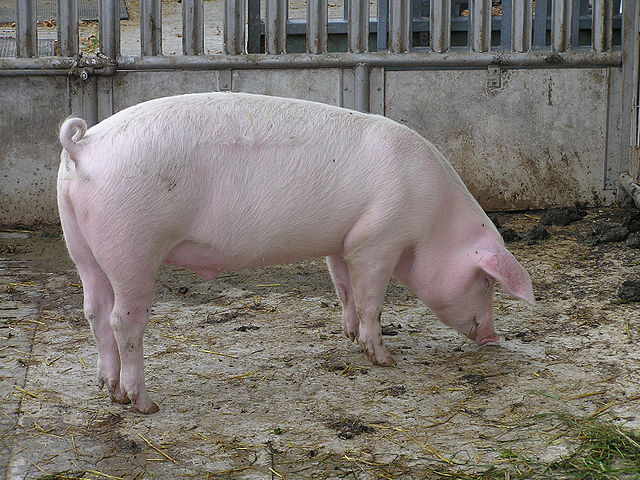
In terms of assisting people in need of organ transplants, “xenotransplantation research has made considerable progress in recent years, largely through the increasing availability of pigs with multiple genetic modifications” 8. Scientists are even suggesting “that a pig with nine genetic modifications (ie, currently available) will provide organs (initially kidneys and hearts) that would function for a clinically valuable period of time, for example, >12 months, after transplantation into patients with end‐stage organ failure” 9. If we imagine the possibilities available with this kind of research, we could soon find ourselves in a world where there are no more long lists of organ donors awaiting a new heart or kidney, and we no longer lose so many lives to a shortage of organs that can be donated. If this research continues, people could no longer need to fear organ failure, and they would owe it all to recent and future breakthroughs in our genome editing technologies.
Disadvantages of Genetic Modification:

While there are many benefits in genetically modifying animals and the accomplishments that could be made, there are several disadvantages to our current methods and concerns about how these technologies will be used. Cloning as a science was one something only thought to be possible in science fiction, but certainly was never thought to one day be sold on store shelves. In 2008, the US Food and Drug Administration (FDA) approved the use of products like meat and milk from cloned cattle, pigs, and goats and from the offspring of clones of any species traditionally used as food. The FDA “said that such meat and milk was ‘as safe to eat as food from conventionally bred animals’” 10. In regards to this approval and what it might mean for other animals, it was found that “there was ‘insufficient information . . . to reach a conclusion on the safety of food from clones of other animal species, such as sheep,’ the FDA said, and it recommended that food from clones of animals other than cattle, pigs, and goats was not introduced into the food supply” 11. Interestingly, in 2008 it was thought that “clones are not expected to enter the food supply” as they are rare and expensive, and it is important to note that “the US agriculture department estimates that most of about 600 cloned animals in the United States are used for breeding. Their offspring, however, produced through ordinary sexual reproduction, are likely to be used for meat and milk” 12. With the recent advancements in cloning science, it seems today like it is only a matter of time until cloned chicken is being served in restaurants and placed on the kitchen table. Because “the agriculture department said that cloning was ‘another breeding technique’ and compared it with ‘other assisted reproductive technologies such as artificial insemination, embryo transfer, and in vitro fertilization used to produce superior animals for milk, meat, or breeding purposes’”, the FDA also decided that “no special labelling will be required on meat or milk from cloned animals or their offspring ‘because food derived from these sources is no different from food derived from conventionally bred animals” and stated that “should a producer express a desire for voluntary labelling (for example, ‘this product is clone-free’), it will be considered on a case-by-case basis to ensure compliance with statutory requirements that labelling be truthful and not misleading’” 13. Bringing a cloned meat product to store shelves is one thing, but not labeling your product and informing the consumer is dangerous, especially if special recalls or defects occur for cloned meat, and consumers have no easy way to tell if their chicken or beef bought at the store was cloned to begin with. People might have once fantasized about instant food and nearly unlimited food supplies, but is this how we want to stock our pantries?
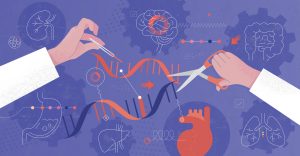
Regarding the previous discussion about how genetically modifying pigs turns them into potential organ donors for xenotransplantation, it should be noted that no clinical trials have been conducted yet due to the “potential disease transfer from pigs to humans” being satisfactorily managed 14. Trading one set of health problems for another is something patients looking for organ transplants should not concern themselves with. Assuming that the pig heart could be transplanted without any possibility of disease transfer, what guarantee is there that a human can accept the pig heart? The survival rate for human heart transplants is certainly not 100%, as evidenced by the numerous unfortunate cases where the transplanted heart was rejected in the patient. Again, this is even assuming there is no disease transfer from the pig heart to a human, which could be catastrophic in terms of potential mutations in a disease previously only found in pigs. The world could soon face another pandemic from pigs! Without further research into the safety of an operation like this, any further work done on experiments with pig hearts would simply be wasting the lives of the animals for a procedure that will never make its way into hospitals.
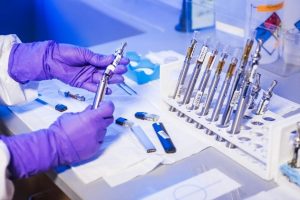
While we are not using any of their organs just yet, many animals are also utilized routinely in the “pharmaceutical industry for drug discovery, drug development, and risk assessment” 15. This is one example of the dark side of genetic modification of animals that has been taking place in research labs worldwide. Scientists, in an attempt to study a disease or viral infection, will make the necessary modifications to animals like mice, the common “lab rats,” to create a susceptibility to the disease and infect the animals 16. Is it ethical to subject animals to this kind of cruelty, giving diseases that are not even natural for them to be infected with, causing cancer in otherwise healthy organisms? Scientists today seem to think so, despite the existence of alternatives for utilizing so many animals in experiments that involve “modern video and computer techniques” 17.
Additionally, corporations will be trying to take control of the technologies and findings that result from studies on these genetically modified animals, preventing even the results of numerous novel studies from truly being made public to protect some product they are trying to market. Many people might question if this could ever be a reality, and to prevent it from being so these at times difficult ethical conversations must be had. God may have given humankind dominion over the animals of the Earth, but certainly all can agree animals should never be allowed to be seen as intellectual property.
Clearly, there are both drawbacks and positives to the genetic modification of animals, and ethical and unethical ways to pursue this type of research. This conversation must be continued among companies, scientists, lawmakers, and governments if there is to be a set of ethical guidelines for genetically modifying an animal’s genome. Some people today take an ethical approach similar to utilitarianism, valuing the good that can come out of their work regarding animal research for the world as being worth the suffering of their research subjects. I believe that we should strive to be honest in our acknowledgement of our progress in the technologies used to make this research possible, looking to continue research where the methods are viable, and likewise find ways to change gears and shift to more technological development for research projects regarding animal genome modification where the research cannot properly be completed or continued with the materials and methods currently available.
- Scripture quotations taken from the 21st Century King James Version®, copyright © 1994. Used by permission of Deuel Enterprises, Inc., Gary, SD 57237. All rights reserved. ↵
- Baltimore, D., Berg, P., Botchan, M., Carroll, D., Charo, R. A., Church, G., … & Yamamoto, K. R. (2015). A prudent path forward for genomic engineering and germline gene modification. Science, 348(6230), 36-38. ↵
- Baltimore, D., Berg, P., Botchan, M., Carroll, D., Charo, R. A., Church, G., … & Yamamoto, K. R. (2015). A prudent path forward for genomic engineering and germline gene modification. Science, 348(6230), 36-38. ↵
- Baltimore, D., Berg, P., Botchan, M., Carroll, D., Charo, R. A., Church, G., … & Yamamoto, K. R. (2015). A prudent path forward for genomic engineering and germline gene modification. Science, 348(6230), 36-38. ↵
- Ormandy, E. H., Dale, J., & Griffin, G. (2011). Genetic engineering of animals: ethical issues, including welfare concerns. The Canadian veterinary journal = La revue veterinaire canadienne, 52(5), 544–550. ↵
- Ormandy, E. H., Dale, J., & Griffin, G. (2011). Genetic engineering of animals: ethical issues, including welfare concerns. The Canadian veterinary journal = La revue veterinaire canadienne, 52(5), 544–550. ↵
- Ormandy, E. H., Dale, J., & Griffin, G. (2011). Genetic engineering of animals: ethical issues, including welfare concerns. The Canadian veterinary journal = La revue veterinaire canadienne, 52(5), 544–550. ↵
- Cooper, D. K., Hara, H., Iwase, H., Yamamoto, T., Li, Q., Ezzelarab, M., … & Ayares, D. (2019). Justification of specific genetic modifications in pigs for clinical organ xenotransplantation. Xenotransplantation, 26(4), e12516. ↵
- Cooper, D. K., Hara, H., Iwase, H., Yamamoto, T., Li, Q., Ezzelarab, M., … & Ayares, D. (2019). Justification of specific genetic modifications in pigs for clinical organ xenotransplantation. Xenotransplantation, 26(4), e12516. ↵
- Tanne J. H. (2008). FDA approves use of cloned animals for food. BMJ (Clinical research ed.), 336(7637), 176. https://doi.org/10.1136/bmj.39468.528368.DB ↵
- Tanne J. H. (2008). FDA approves use of cloned animals for food. BMJ (Clinical research ed.), 336(7637), 176. https://doi.org/10.1136/bmj.39468.528368.DB ↵
- Tanne J. H. (2008). FDA approves use of cloned animals for food. BMJ (Clinical research ed.), 336(7637), 176. https://doi.org/10.1136/bmj.39468.528368.DB ↵
- Tanne J. H. (2008). FDA approves use of cloned animals for food. BMJ (Clinical research ed.), 336(7637), 176. https://doi.org/10.1136/bmj.39468.528368.DB ↵
- Ormandy, E. H., Dale, J., & Griffin, G. (2011). Genetic engineering of animals: ethical issues, including welfare concerns. The Canadian veterinary journal = La revue veterinaire canadienne, 52(5), 544–550. ↵
- Ormandy, E. H., Dale, J., & Griffin, G. (2011). Genetic engineering of animals: ethical issues, including welfare concerns. The Canadian veterinary journal = La revue veterinaire canadienne, 52(5), 544–550. ↵
- Ormandy, E. H., Dale, J., & Griffin, G. (2011). Genetic engineering of animals: ethical issues, including welfare concerns. The Canadian veterinary journal = La revue veterinaire canadienne, 52(5), 544–550. ↵
- Andersen, M. L., & Winter, L. M. (2017). Animal models in biological and biomedical research-experimental and ethical concerns. Anais da Academia Brasileira de Ciências, 91(suppl 1), e20170238. ↵


